 The road south from Santa Rosalía to Loreto passes through absolutely magnificent scenery, particularly along Bahía Concepción on the stretch of coastal road between Mulegé and Cadegé. Numerous sandy beaches sported informal RV parks and camps with a sleepy yet well-cared-for ambience we had expected farther north on the Baja California Peninsula, with sailboats in the water and palm-thatched palapas on the beach.
The road south from Santa Rosalía to Loreto passes through absolutely magnificent scenery, particularly along Bahía Concepción on the stretch of coastal road between Mulegé and Cadegé. Numerous sandy beaches sported informal RV parks and camps with a sleepy yet well-cared-for ambience we had expected farther north on the Baja California Peninsula, with sailboats in the water and palm-thatched palapas on the beach.
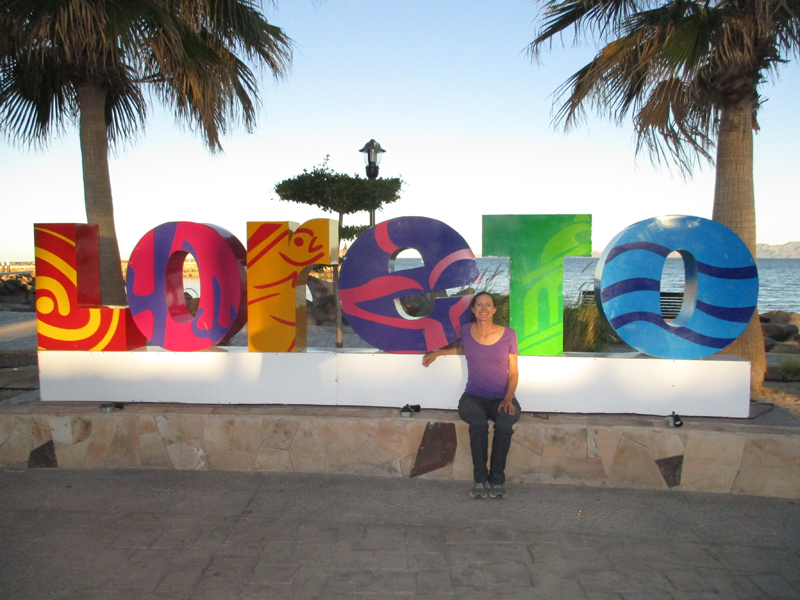 We arrived in the colorful town of Loreto in the afternoon. Because Loreto is one of Mexico’s Pueblos Mágicos, prices at hotels and restaurants run higher here than our previous Baja road trip stops. Retired Americans and Canadians constitute a sizable portion of the town’s population, and tourism dollars undoubtedly contribute to the town center’s tidy appearance. Away from the two or three principal blocks in the tourist area, however, locals replace gringos and the town feels less polished. It’s hard to say which version we prefer.
We arrived in the colorful town of Loreto in the afternoon. Because Loreto is one of Mexico’s Pueblos Mágicos, prices at hotels and restaurants run higher here than our previous Baja road trip stops. Retired Americans and Canadians constitute a sizable portion of the town’s population, and tourism dollars undoubtedly contribute to the town center’s tidy appearance. Away from the two or three principal blocks in the tourist area, however, locals replace gringos and the town feels less polished. It’s hard to say which version we prefer.
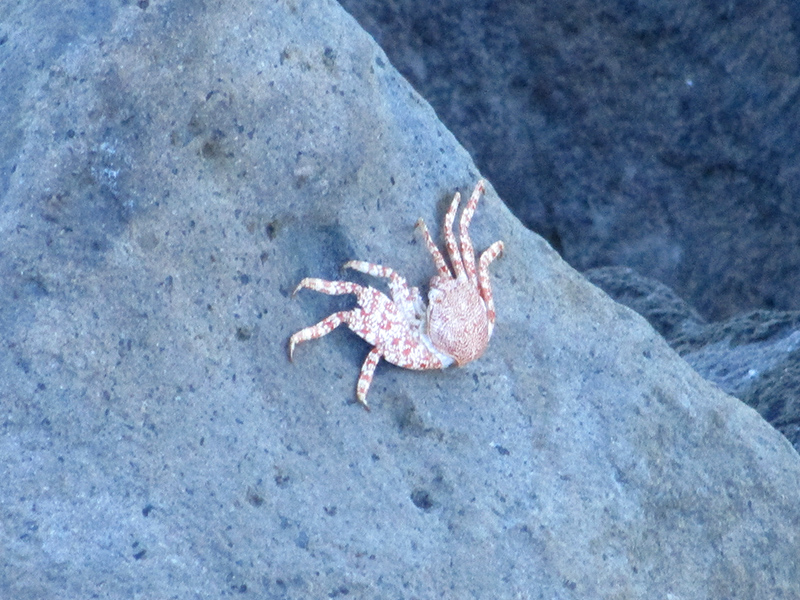 We checked into the historic Plaza Loreto Hotel on Avenida Miguel Hidalgo, the main street that leads through town to the seaside malecón. We relaxed in the hotel’s charming courtyard for a bit and then went for the most delicious seafood lunch at the nearby La Palapa. We had to walk off all that good food with a long stroll down to the beach and the malecon, watching crabs scuttle about on the rocks at the water’s edge.
We checked into the historic Plaza Loreto Hotel on Avenida Miguel Hidalgo, the main street that leads through town to the seaside malecón. We relaxed in the hotel’s charming courtyard for a bit and then went for the most delicious seafood lunch at the nearby La Palapa. We had to walk off all that good food with a long stroll down to the beach and the malecon, watching crabs scuttle about on the rocks at the water’s edge.
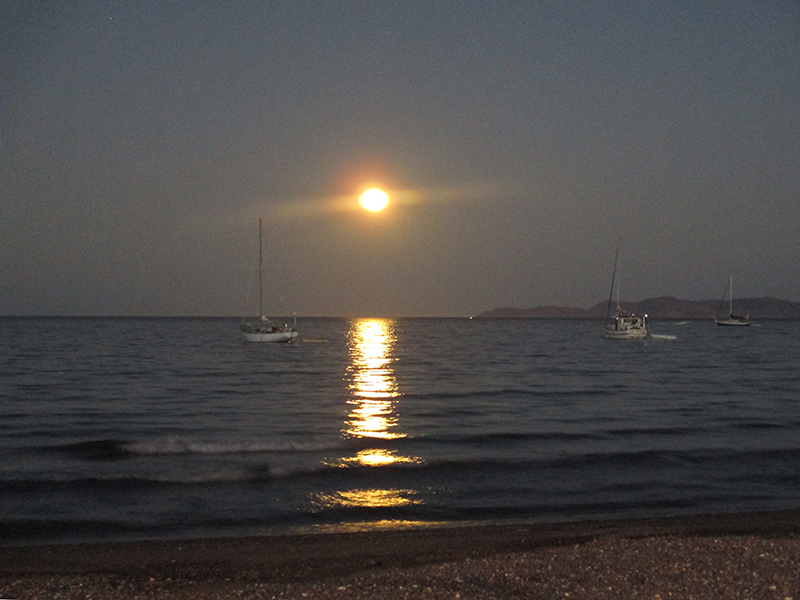 Loreto Bay has a long stretch of beach both north and south of town, so we spent several hours walking until the full moon rose across the water as dusk fell. As we returned along the cobblestone Avenida Salvatierra to the central plaza, people began filling rows of chairs set up facing the gazebo. They were there for the official lighting of the town Christmas tree. Holiday music in English and Spanish played over loudspeakers, and children mobbed a Santa Claus making his way through the crowd to a microphone. He announced in heavily American-accented Spanish that he was a “Gringo Santa” who would be there nightly until Christmas for photographs, although he didn’t speak enough Spanish to take requests for children’s wish lists. Following the tree lighting, several groups of costumed performers from the Casa de Cultura entertained the crowd with a few dance numbers. We enjoyed the folkloric slice of Mexican small-town culture kicking off the twelve days of Christmas.
Loreto Bay has a long stretch of beach both north and south of town, so we spent several hours walking until the full moon rose across the water as dusk fell. As we returned along the cobblestone Avenida Salvatierra to the central plaza, people began filling rows of chairs set up facing the gazebo. They were there for the official lighting of the town Christmas tree. Holiday music in English and Spanish played over loudspeakers, and children mobbed a Santa Claus making his way through the crowd to a microphone. He announced in heavily American-accented Spanish that he was a “Gringo Santa” who would be there nightly until Christmas for photographs, although he didn’t speak enough Spanish to take requests for children’s wish lists. Following the tree lighting, several groups of costumed performers from the Casa de Cultura entertained the crowd with a few dance numbers. We enjoyed the folkloric slice of Mexican small-town culture kicking off the twelve days of Christmas.
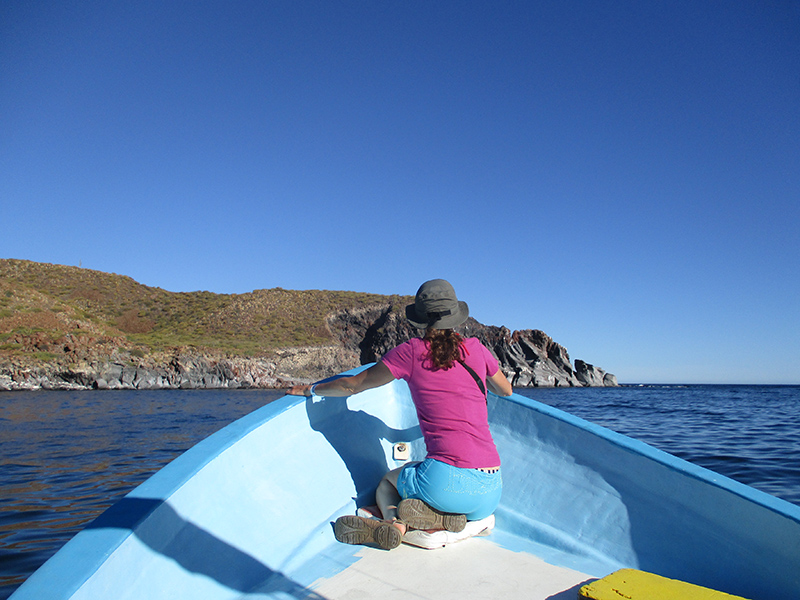 Blue skies and balmy weather greeted us the next morning as we met our boat captain, Toño, at the town dock for a trip out to Isla Coronado. The island is part of Loreto Bay National Park, Mexico’s third-largest national park (although the system also includes many other protected areas that are even larger). UNESCO also designated the area a World Heritage Site because of the marine and terrestrial biodiversity found here.
Blue skies and balmy weather greeted us the next morning as we met our boat captain, Toño, at the town dock for a trip out to Isla Coronado. The island is part of Loreto Bay National Park, Mexico’s third-largest national park (although the system also includes many other protected areas that are even larger). UNESCO also designated the area a World Heritage Site because of the marine and terrestrial biodiversity found here.
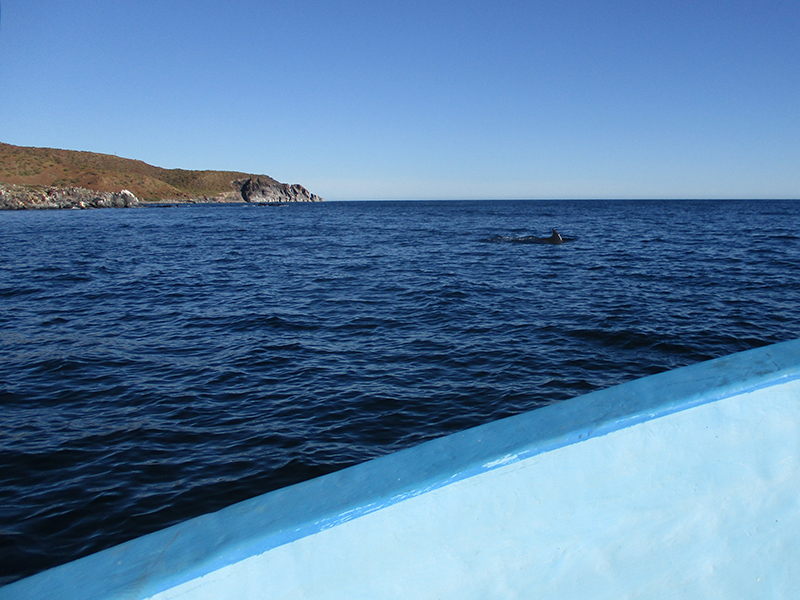 Flying fish zipped low over the water as we motored out into the gulf. Nearing the south side of the island a pod of dolphins appeared, making graceful arcs as they leapt from the water chasing their breakfast. We lingered for a few minutes before moving on the east side of the island.
Flying fish zipped low over the water as we motored out into the gulf. Nearing the south side of the island a pod of dolphins appeared, making graceful arcs as they leapt from the water chasing their breakfast. We lingered for a few minutes before moving on the east side of the island.
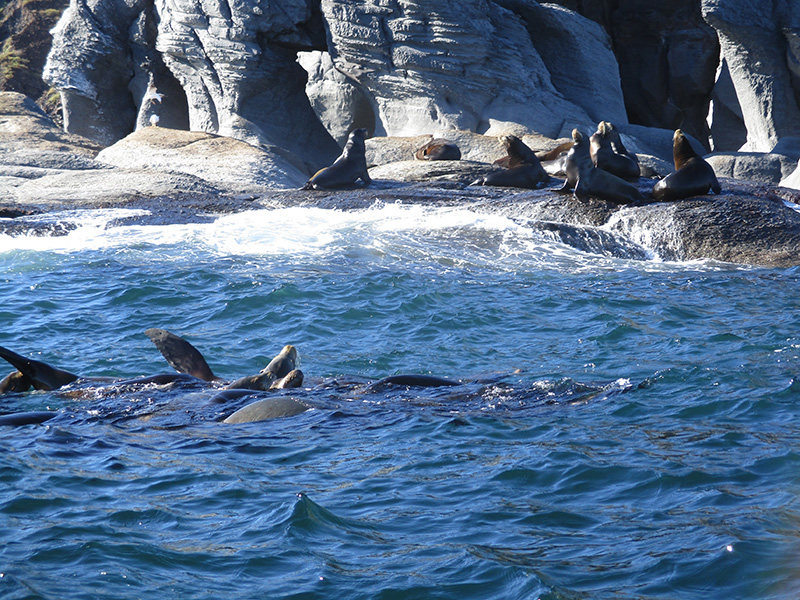 There, a sea lion colony inhabited the rocky shore. Some of these blubbery beasts lazed about or barked from the rocks at the water’s edge, and others floated on their backs in the water with a mustachioed muzzle and one flipper above the surface. Toño told us that they often rest that way, with one half of their body asleep and the other half awake. Other marine mammals such as dolphins and manatees can do this, too, as do many birds. Blue, fin and humpback whales also call Loreto Bay home for part of each year, but they don’t arrive until about February, so we were too early to see them.
There, a sea lion colony inhabited the rocky shore. Some of these blubbery beasts lazed about or barked from the rocks at the water’s edge, and others floated on their backs in the water with a mustachioed muzzle and one flipper above the surface. Toño told us that they often rest that way, with one half of their body asleep and the other half awake. Other marine mammals such as dolphins and manatees can do this, too, as do many birds. Blue, fin and humpback whales also call Loreto Bay home for part of each year, but they don’t arrive until about February, so we were too early to see them.
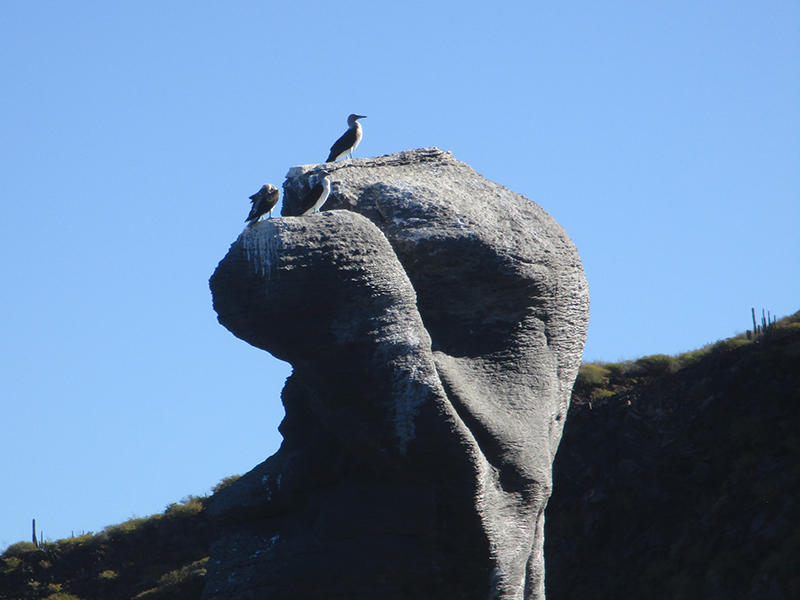 But as we circled the island counter-clockwise, we came upon gulls, pelicans, cormorants and blue-footed boobies — a bird species we hadn’t seen before — loitering on the high sea cliffs and rock columns just offshore.
But as we circled the island counter-clockwise, we came upon gulls, pelicans, cormorants and blue-footed boobies — a bird species we hadn’t seen before — loitering on the high sea cliffs and rock columns just offshore.
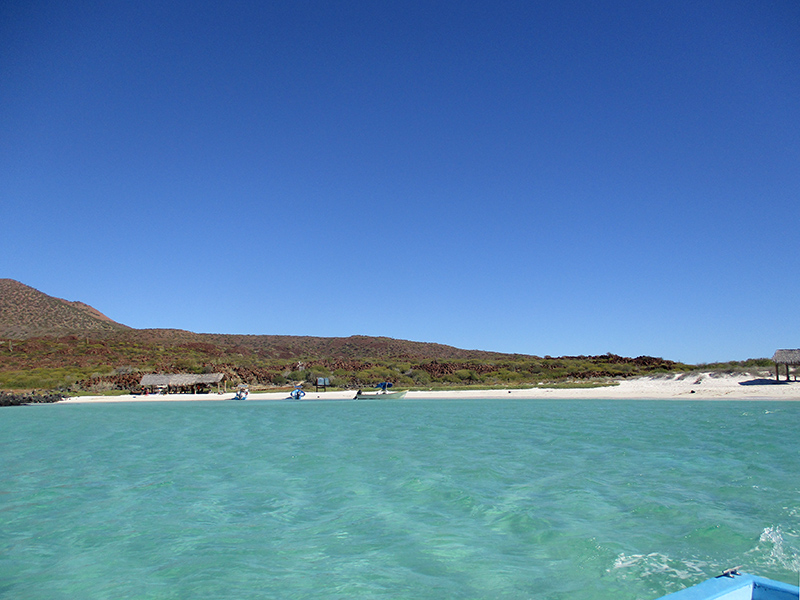 We landed and disembarked on a lovely sand beach on the west side of the island that tapers more gradually into the sea. We were able to land only because we had purchased permits through the Natural Protected Areas Commission, which allows day trips to the island.
We landed and disembarked on a lovely sand beach on the west side of the island that tapers more gradually into the sea. We were able to land only because we had purchased permits through the Natural Protected Areas Commission, which allows day trips to the island.
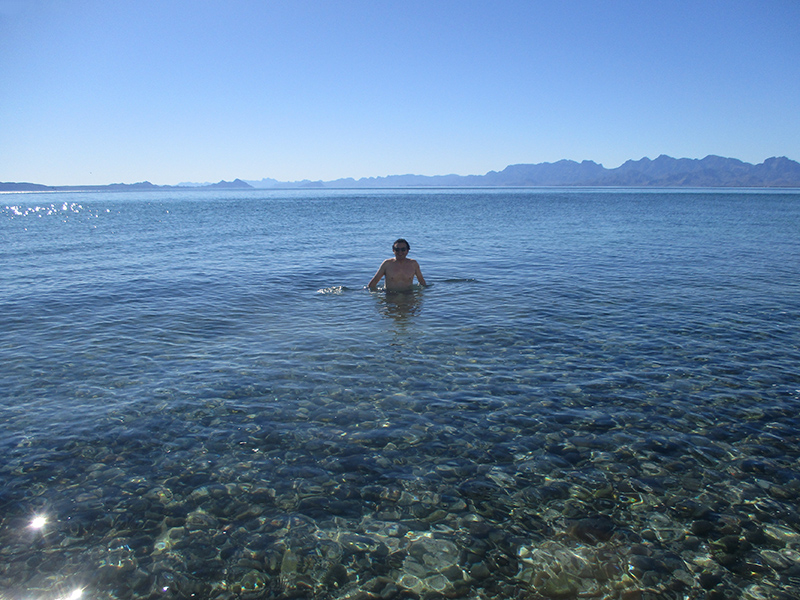 Swimming, snorkeling, picnicking and hiking are popular activities. We took a trail through the arid, shrubby landscape over to a small beach on the south side of the island. Hector went for a brief swim in the crystal-clear water, but I found the water too cold to tolerate above the knees.
Swimming, snorkeling, picnicking and hiking are popular activities. We took a trail through the arid, shrubby landscape over to a small beach on the south side of the island. Hector went for a brief swim in the crystal-clear water, but I found the water too cold to tolerate above the knees.
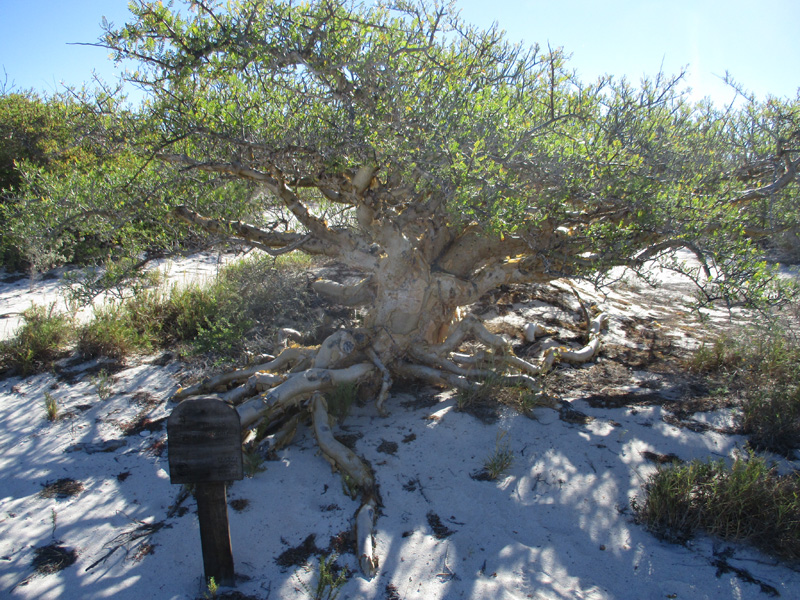 We set off on another path that led to the island’s volcanic mountain summit, passing thorny shrubs such as the elephant tree. The trail eventually reached a chunky field of sharp, wobbly lava rocks, and our water shoes were clearly not up to the task. No summit for us.
We set off on another path that led to the island’s volcanic mountain summit, passing thorny shrubs such as the elephant tree. The trail eventually reached a chunky field of sharp, wobbly lava rocks, and our water shoes were clearly not up to the task. No summit for us.
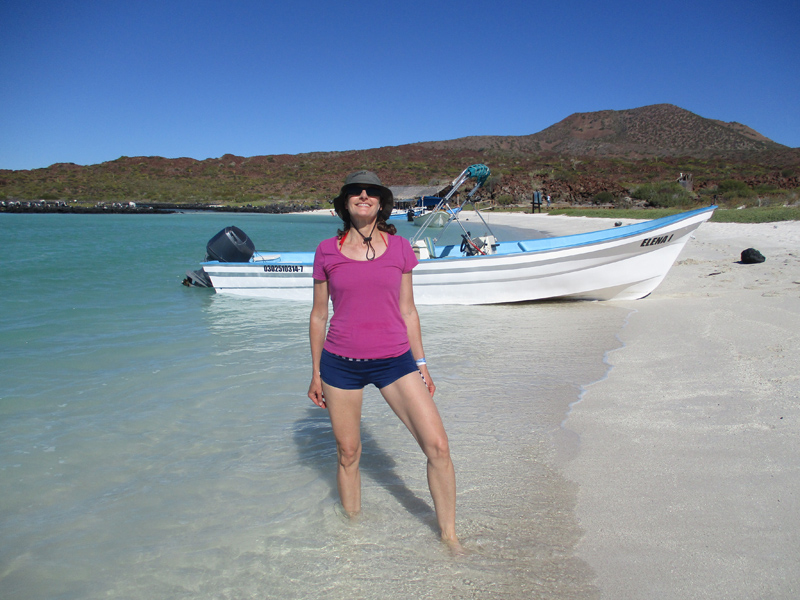 We headed back to beach to relax, mesmerized by gentle waves of the turquoise sea lapping the white sand. Reluctantly we had to board Toño’s little panga and motor back to Loreto, enjoying the cool breeze in the warm afternoon.
We headed back to beach to relax, mesmerized by gentle waves of the turquoise sea lapping the white sand. Reluctantly we had to board Toño’s little panga and motor back to Loreto, enjoying the cool breeze in the warm afternoon.
 Later we checked out the Nuestra Señora de Loreto mission — the first on the Baja California Peninsula — established in 1697 by Jesuit priest Juan María Salvatierra. A sizable garden and fruit and nut orchard still thrives behind the mission; such gardens provided an important source of food for mission residents, especially in arid country such as this.
Later we checked out the Nuestra Señora de Loreto mission — the first on the Baja California Peninsula — established in 1697 by Jesuit priest Juan María Salvatierra. A sizable garden and fruit and nut orchard still thrives behind the mission; such gardens provided an important source of food for mission residents, especially in arid country such as this.
 We spent the remainder of the afternoon on the beach at low tide to watch gulls and terns poking about in the mudflats for mollusks and shellfish. Moving to a pebbly swath of shoreline, we, too, poked about among the rocks, encountering limpets, winkles, miniature crabs, hermit crabs, tiny starfish and even one 12-armed sun star. Tide pool creatures have always fascinated both of us, and we can spend hours examining crevices and shallow depressions in tidal zones for signs of life. We had more opportunities to check out shoreline creatures at our next destination, La Paz.
We spent the remainder of the afternoon on the beach at low tide to watch gulls and terns poking about in the mudflats for mollusks and shellfish. Moving to a pebbly swath of shoreline, we, too, poked about among the rocks, encountering limpets, winkles, miniature crabs, hermit crabs, tiny starfish and even one 12-armed sun star. Tide pool creatures have always fascinated both of us, and we can spend hours examining crevices and shallow depressions in tidal zones for signs of life. We had more opportunities to check out shoreline creatures at our next destination, La Paz.
These are some amazing pictures of blue skies, turquoise waters and white sandy beaches. This must have been a fun and relaxing jaunt to Loreto Bay.
Adelante!
Aw, what a nice touch. You’ve learned the Spanish word for “onward”!